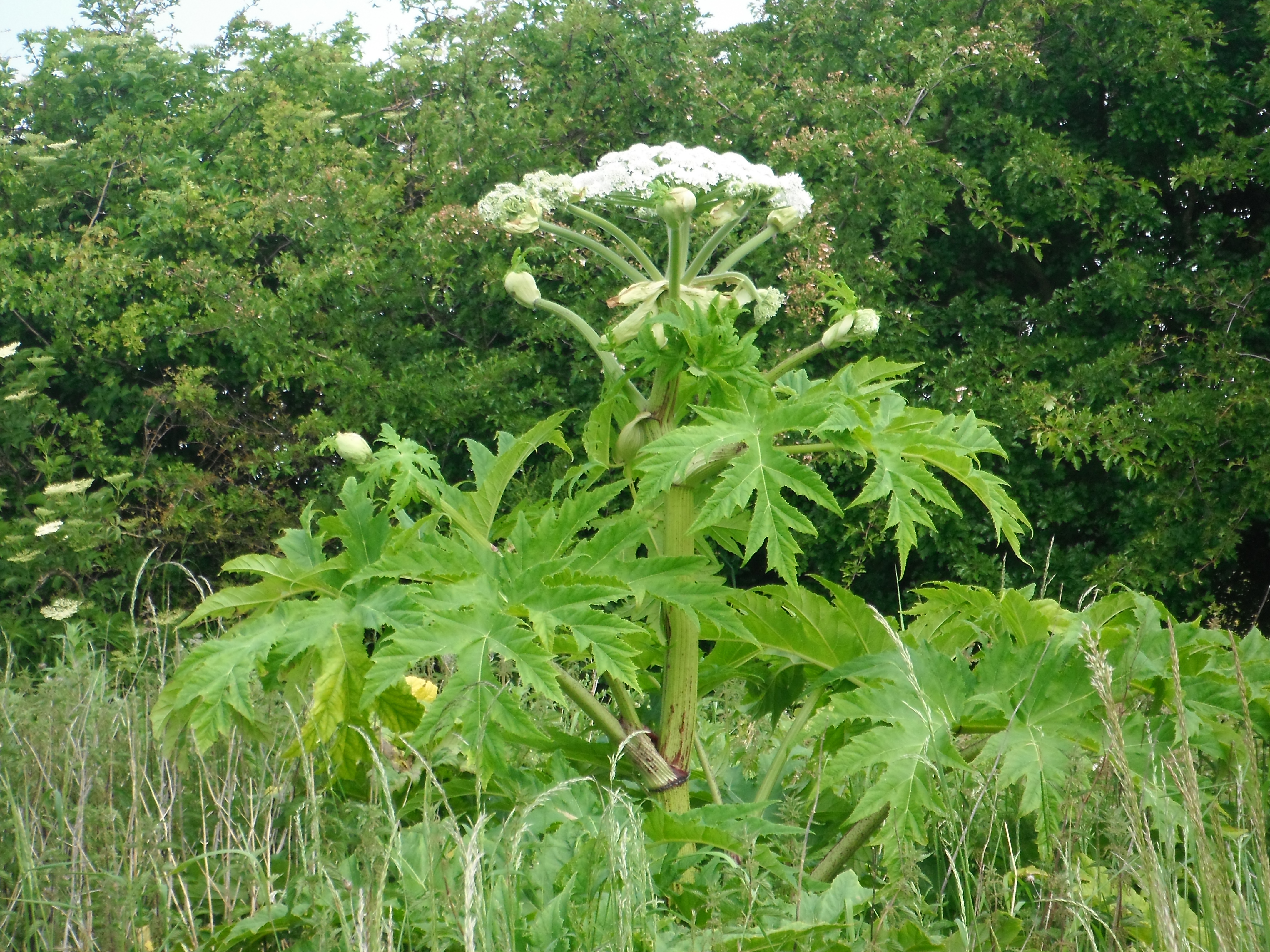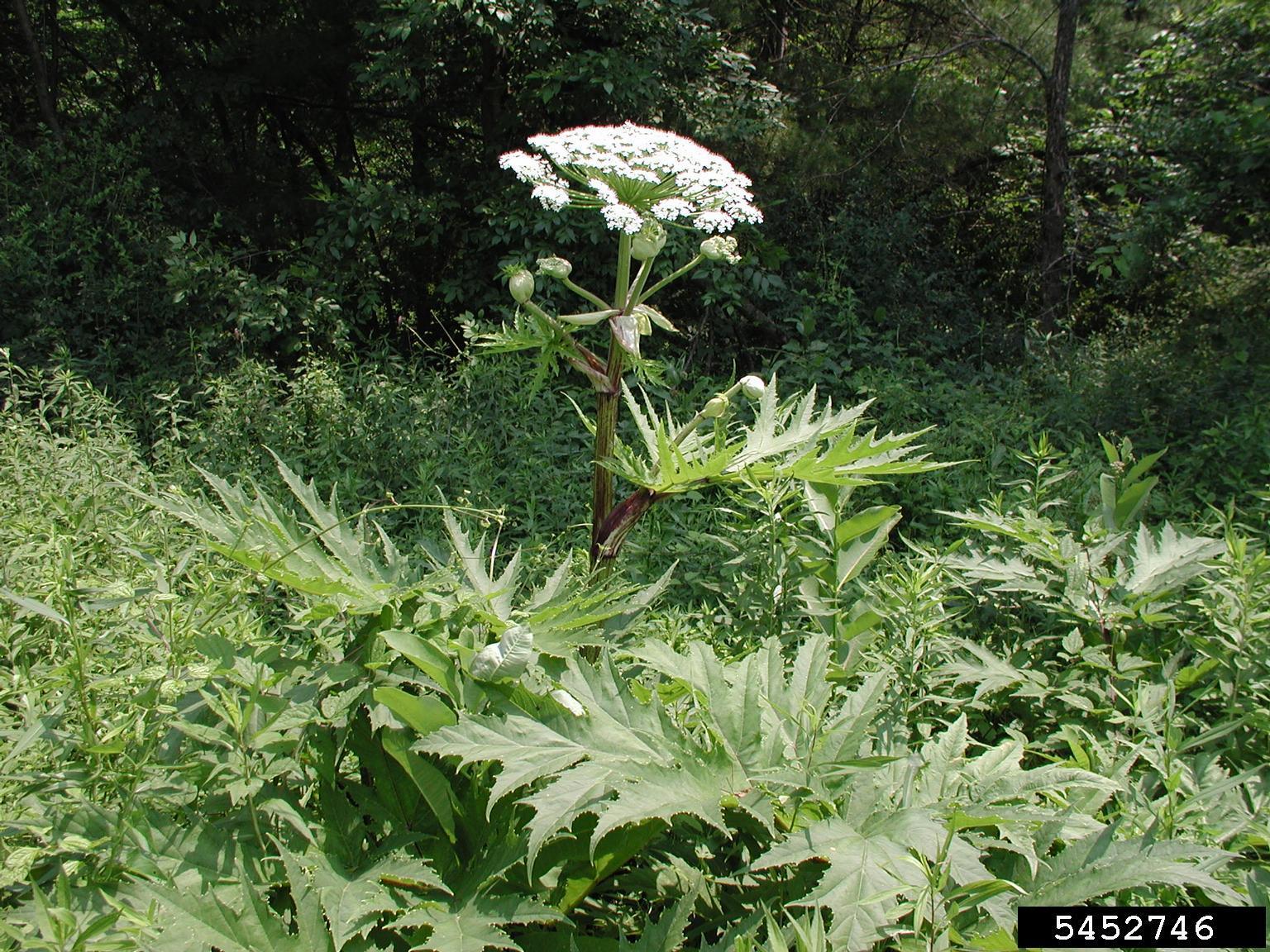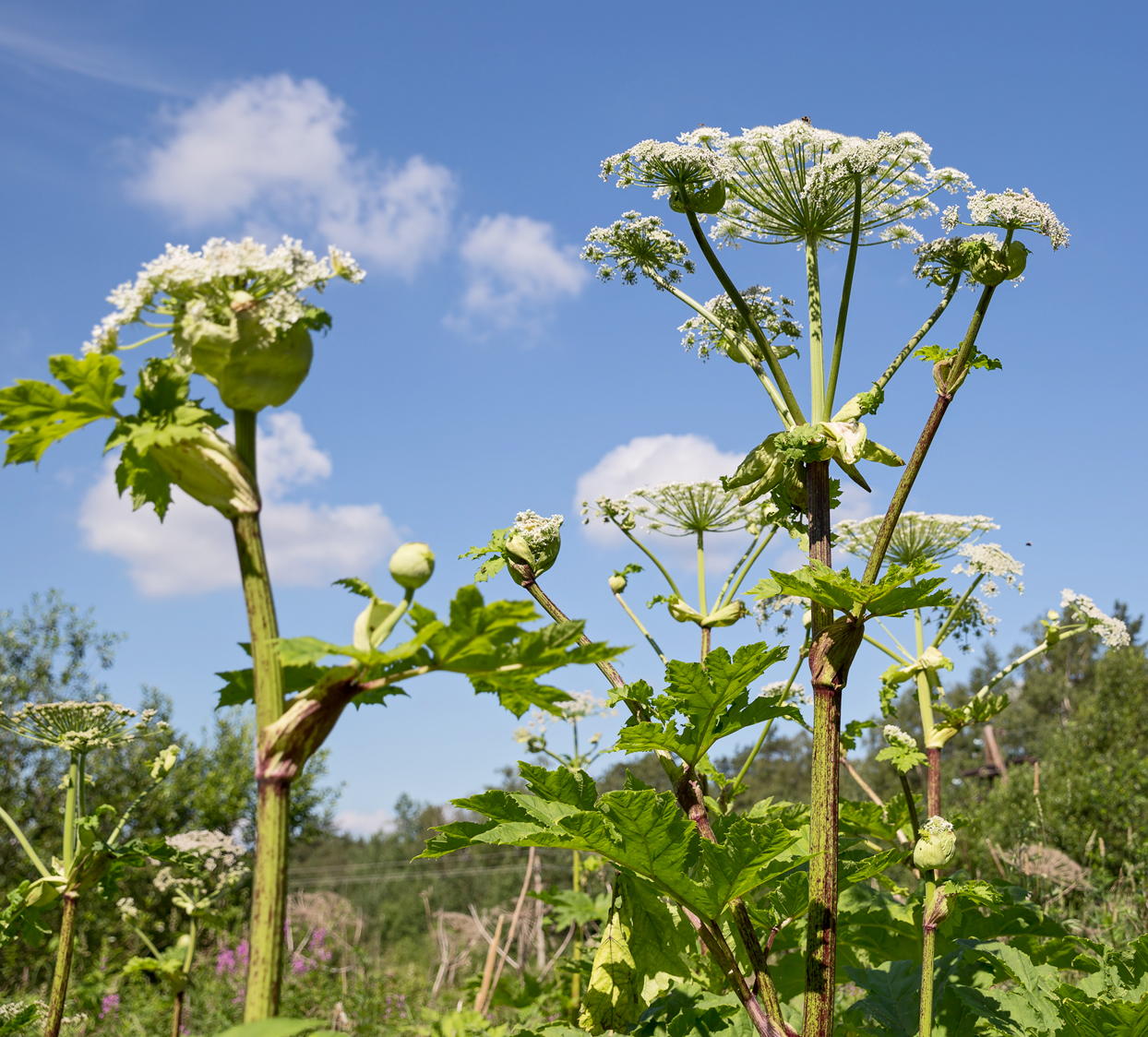Biological Profile: Giant Hogweed
Giant hogweed, known scientifically as Heracleum mantegazzianum, is a formidable plant native to the Caucasus region. This invasive species has spread aggressively across Europe and North America, posing significant ecological and health concerns.
The towering giant hogweed, a plant known for its menacing sap, evokes a sense of foreboding in those who cross its path. Like the chilling news of an iran helicopter president crash, the sight of this formidable plant can send shivers down the spine.
Yet, amidst the fear, one cannot help but marvel at the sheer resilience of nature, as the giant hogweed continues to thrive despite the dangers it poses.
Giant hogweed is distinguished by its colossal size and striking appearance. It can reach heights of up to 15 feet, with hollow, ridged stems adorned with reddish-purple blotches. The leaves are massive, deeply lobed, and arranged in a rosette at the base of the plant. They can grow up to 5 feet in diameter, resembling an umbrella. The inflorescence, or flower head, is an impressive umbel, consisting of numerous small, white flowers. Each umbel can produce thousands of seeds, contributing to the plant’s rapid spread.
Life Cycle
Giant hogweed has a biennial life cycle. In the first year, it establishes a rosette of basal leaves, storing energy in its taproot. During the second year, the plant bolts, producing a tall, flowering stem. After flowering, the plant dies back, leaving behind a large number of seeds.
Giant hogweed, a towering plant with toxic sap, can cause severe burns and blistering. While its dangers are well-known, its resilience is also remarkable. Like the president of Iran’s helicopter , which braved treacherous conditions, giant hogweed stands tall, weathering storms and continuing to thrive in spite of adversity.
Adaptations
Giant hogweed’s success as an invasive species can be attributed to several unique adaptations. Its robust taproot system allows it to anchor securely in the soil, while its large leaves provide ample surface area for photosynthesis. The plant’s ability to produce copious amounts of seeds, combined with its wind-dispersed seeds, ensures its wide dispersal. Additionally, giant hogweed contains furanocoumarins, which are toxic compounds that deter herbivores and give the plant a competitive advantage in disturbed habitats.
Giant hogweed, a colossal and formidable plant, can cause severe burns and skin irritation. Its stature and potency are reminiscent of the revered figure of Saudi King Salman , whose leadership and influence have left an indelible mark on the world stage.
Just as the king’s presence commands respect, giant hogweed demands caution and admiration, reminding us of the awe-inspiring power that nature wields.
Habitat and Distribution
Giant hogweed, native to the Caucasus region, thrives in moist, fertile soils with ample sunlight and water. It prefers disturbed habitats, including roadsides, riverbanks, and abandoned fields.
The plant’s aggressive growth and ability to produce numerous wind-dispersed seeds have facilitated its spread to other regions. It has become invasive in Europe, North America, and parts of Asia, posing significant ecological and economic challenges.
Current Distribution
- Europe: Giant hogweed is widespread in the United Kingdom, Ireland, France, Germany, and other European countries.
- North America: The plant has established itself in several states, including New York, Pennsylvania, and Washington.
- Asia: Giant hogweed has been introduced to parts of Russia, China, and Japan.
Ecological Impacts

Giant hogweed exerts a profound and detrimental influence on native plant communities, biodiversity, and ecosystem dynamics. Its sheer size and allelopathic properties suppress and displace native vegetation, leading to a reduction in plant diversity and habitat complexity.
Altered Ecosystem Dynamics
The presence of giant hogweed disrupts ecosystem dynamics by altering soil chemistry and nutrient cycling. The plant’s extensive root system depletes soil nutrients, while its dense canopy blocks sunlight, inhibiting the growth of understory vegetation. This creates an environment that favors the spread of giant hogweed while hindering the establishment of native species.
Health Hazards
Giant hogweed poses severe health hazards due to its toxic sap. Contact with this sap can cause extreme skin irritation and burns.
The sap contains a group of chemicals called furanocoumarins, which react with ultraviolet (UV) radiation from sunlight to produce a phototoxic reaction on human skin. This reaction leads to the formation of blisters, swelling, and intense pain.
First Aid Treatment, Giant hogweed
- Immediately rinse the affected area thoroughly with cold water for at least 15 minutes.
- Avoid scrubbing or using harsh soaps, as this can worsen the irritation.
- Cover the affected area with a loose bandage or gauze to protect it from further exposure to sunlight.
- Seek medical attention as soon as possible, especially if the exposure is extensive or if blisters have formed.
Medical Attention
- Medical treatment may include pain relievers, antibiotics, and topical corticosteroids to reduce inflammation and prevent infection.
- In severe cases, hospitalization may be necessary for intensive care and monitoring.
- Long-term exposure to giant hogweed sap can lead to scarring, hyperpigmentation, and increased sensitivity to sunlight.
Management and Control

Controlling giant hogweed infestations is crucial to mitigate their ecological and health impacts. Various methods are available, including mechanical removal, chemical treatments, and biological control.
Mechanical Removal
Mechanical removal involves physically removing giant hogweed plants from infested areas. This method is most effective when infestations are small and isolated.
- Hand-pulling: Small plants can be pulled by hand, ensuring removal of the entire root system.
- Mowing: Mowing can suppress plant growth, but repeated cuttings are necessary to prevent regrowth.
- Excavation: Excavating soil around infested plants and removing the entire root system is effective but labor-intensive.
Chemical Treatments
Chemical treatments involve using herbicides to control giant hogweed. These treatments should be applied by trained professionals to minimize environmental and health risks.
- Glyphosate: A broad-spectrum herbicide that is effective against giant hogweed, but non-selective, potentially harming other vegetation.
- Triclopyr: A selective herbicide that targets broadleaf plants, including giant hogweed, with less impact on grasses.
- Imazapyr: A systemic herbicide that translocates throughout the plant, providing long-term control.
Biological Control
Biological control involves introducing natural enemies of giant hogweed to reduce its populations. However, this method is still under development and requires further research.
- Hogweed longhorn beetle: A beetle that feeds on giant hogweed leaves and stems, potentially reducing plant growth and reproduction.
- Hogweed sawfly: A sawfly that lays eggs in giant hogweed stems, causing damage to the plant’s vascular system.
The table below summarizes the advantages and disadvantages of each control method:
| Method | Advantages | Disadvantages |
|---|---|---|
| Mechanical Removal | Effective for small infestations, reduces chemical use | Labor-intensive, can damage non-target plants |
| Chemical Treatments | Effective for large infestations, provides rapid control | Environmental risks, non-selective herbicides can harm other vegetation |
| Biological Control | Environmentally friendly, long-term control potential | Still under development, effectiveness uncertain |
The choice of control method depends on the size and location of the infestation, the presence of sensitive habitats, and the availability of resources. Integrated pest management (IPM) approaches, combining multiple methods, are often most effective in managing giant hogweed infestations.
Prevention and Awareness

The effective management of giant hogweed infestations relies heavily on raising public awareness and implementing proactive prevention measures. Educating people about the dangers posed by this invasive species is crucial to minimize its spread and protect human health.
A comprehensive public awareness campaign is essential to inform the public about the risks associated with giant hogweed and encourage early detection and reporting of infestations. This campaign should utilize various channels to disseminate information, including posters, brochures, online resources, and community events.
Informative Materials
- Posters and Brochures: Create visually appealing posters and brochures that highlight the distinctive features of giant hogweed, emphasizing its toxic sap and potential health hazards. Distribute these materials in public places, such as parks, community centers, and schools, to raise awareness and promote recognition of the plant.
- Online Resources: Develop an informative website or online platform dedicated to providing detailed information about giant hogweed, including its identification, potential risks, and management strategies. Ensure the website is user-friendly, accessible, and regularly updated with the latest research and control methods.
Community Events and Workshops
- Community Events: Organize community events, such as guided nature walks or public talks, to engage the public and educate them about the dangers of giant hogweed. Invite experts and researchers to provide firsthand knowledge and answer questions from attendees.
- Workshops: Conduct workshops tailored to specific target groups, such as landowners, farmers, and environmental organizations. These workshops can provide in-depth training on identification, reporting, and management techniques for giant hogweed infestations.